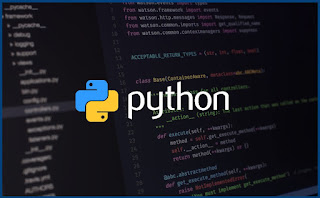Hello Python Geeks, we hope you are learning Python programming language in simple ways. If not, take a chill-pill; we are here to help and to dig you out from learning Python the hard way. In this post, we focus on some of the benefits and applications of Python Programming language. You need to bear with us for an amazing learning experience in Python Programming.
For those who are new to the Python language, you need to check out this post for Basic Introduction to Python programming language. I’ll give a short description of the Python language to help you serve better, so, let us begin.
Introduction
Python is a general-purpose, high-level, interpreted, dynamic and object-oriented programming language created by Guido Van Rossum. Python is simple and easy to learn and it is highly readable moreover, it provides lots of high-level data structures. Python makes the development and debugging fast because there is no compilation step included in python development and edit-test-debug cycle is very fast.
Benefits of Python Programming
Python language has numerous benefits among other programming languages. These are listed as:
- Open Source programming language
- It supports a vast number of libraries.
- Python is highly readable and easy to learn.
- Python provides enhanced process control through its object-oriented design.
- It is very user-friendly and has very rich built-in data structures which are easy to use that provides the option of dynamic high-level data typing.
Applications of Python
Similar to benefits, Python is also fulfilled with lots of system-based applications as well as real-life applications that brings it among the top of any programming language. Various applications of Python are listed as:
- Software Development- Python is helpful in software development process since it is used to build control and management, testing and moreover it works as a support language.
- Business Applications- Python is used to build business applications similar to e-commerce and ERP. Tryton is a high-level application platform built on Python.
- CAD Applications- Fandango is a real application that is built on Python which provides full features of the CAD.
- The famous social networking site “Reddit” is entirely written in Python.
- Python is also used in web development, some of its web development frameworks are Django, Flask, Pyramid, TurboGears etc.
- Python has been used in Artificial Intelligence and Algorithmic trading as well.
As a programming language Python is almost fit on all quality sets. Python consists of multiple rich features, it came into the picture with huge benefits and follows its path to become a successful programming language among the developers across the world. Do suggest your reviews on this article in the comment section. Happy Learning.















